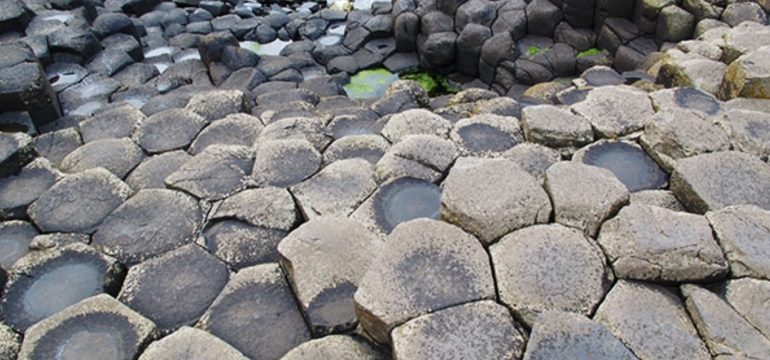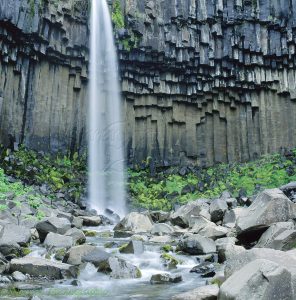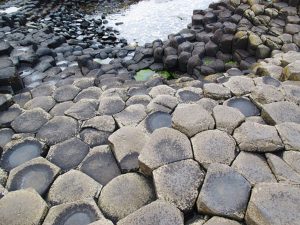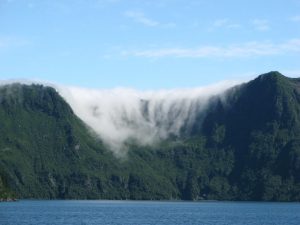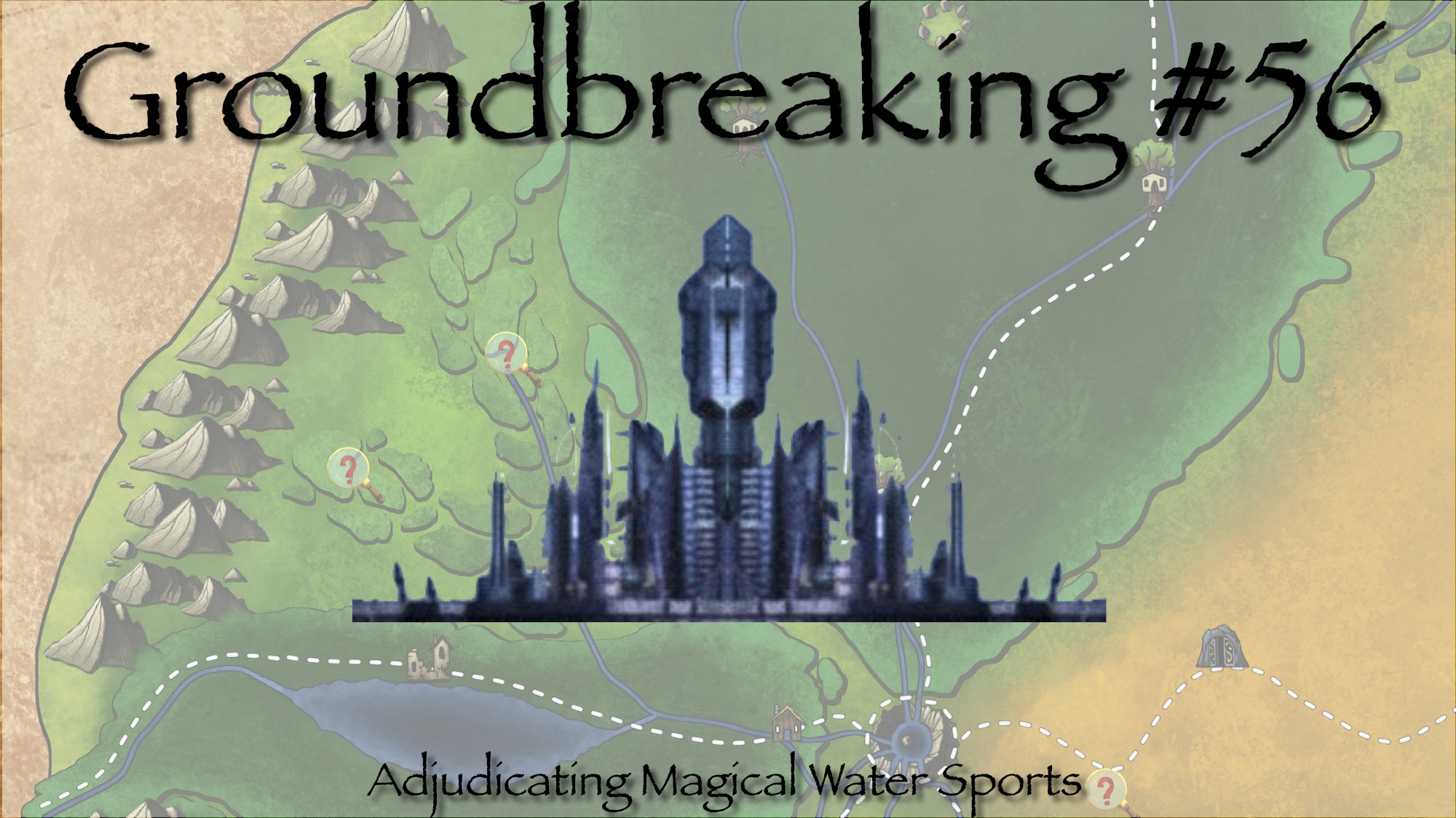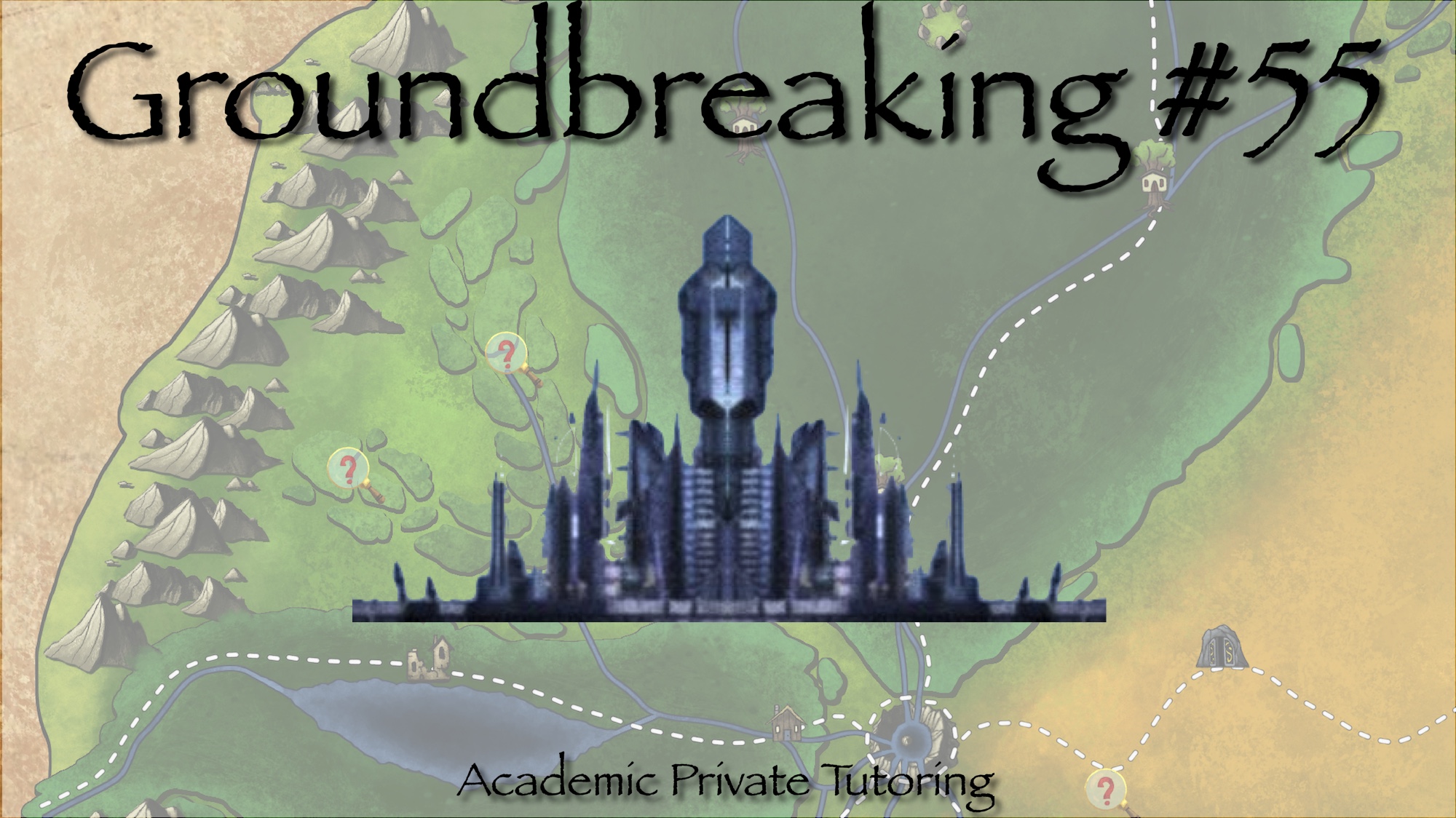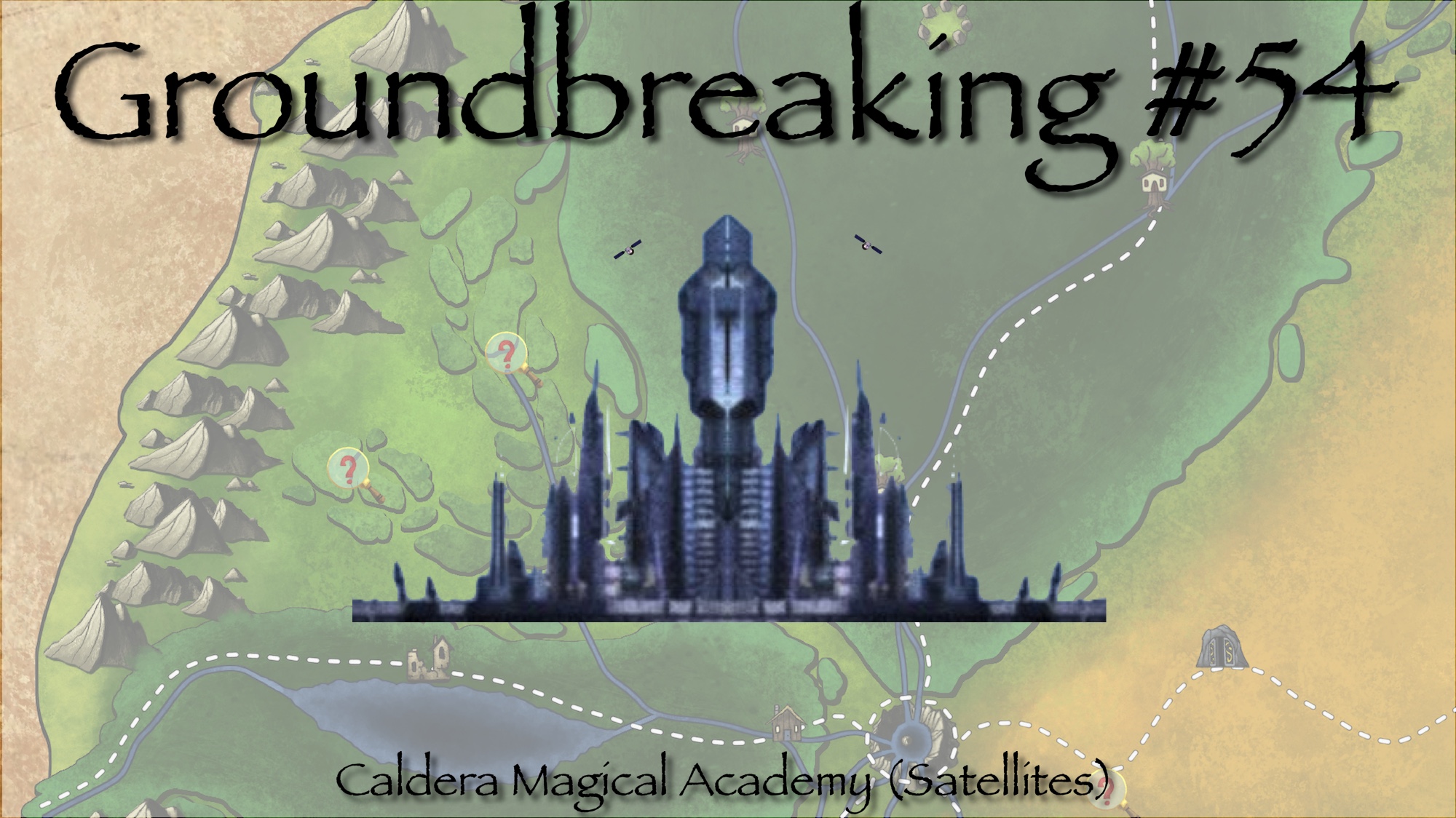Welcome back to Groundbreaking! Last week, we covered a lot of ground laying the foundation of our mountain basin and describing the four distinct areas that surround our extinct volcano. This week, I wanted to detail the caldera more. While my previous post was mostly based in real world geography, we are now going to diverge from what is possible in the real world.
Before the explosion that created the caldera, the peak of the mountain used to reach 8,000 ft. above sea level, and roughly 2,000 ft. above the basin floor. Prior to blowing the top off of the mountain, the volcano melted the center of the mountain, slowly replacing it with large hexagonal basalt columns. The sizes of the columnar basalt range from a foot or two across to some that are in excess of 20 feet. I don’t think this is something that can really happen, I believe these are formed as part of volcanic cooling from air or water. I am sure they aren’t found in sizes bigger than a foot or two. I just really like the columnar basalt I have seen in pictures and wanted them as a part of this.
When the volcano finally did erupt, it destroyed or ejected the columns both up and out (pieces of which can be found up to a hundred miles away). This left a caldera roughly 4 miles wide (e/w) and 5 miles long (n/s) with an average depth of 3,000 feet, that is now filled with water to within 500 ft of the rim. The highest point of the rim is 7,000 ft, while the lake’s surface is at roughly 6,500 ft. The lake’s surface is at this level due to waterfalls from a series of holes along the rim that were created when the explosion blew out the sides. Each of these waterfalls leads to the head of a mountain stream or river. There are similar holes in other locations of the rim that are above the current water line, and thus they don’t lead to streams. While the height of the caldera does cause a lot of rain to the west, not nearly enough falls or finds its way into the lake. We therefore go with the idea of some unnatural source of water, which will be discussed another time.
While most of the basalt columns were ejected, there are some leftover that form a shelf on the northeast side, at water level. This shelf is about a mile long and extends about half a mile from the wall. The water depth on the shelf is generally between 1 and 10 feet deep. Due to the elevation, winter cold weather freezes this shallow portion of the lake every year. While the lake is big enough and deep enough to not completely freeze, one would expect to see thin layers of ice and even partial freezing around the shoreline and adjacent to the shelf. For reasons as yet unknown, the water in the deepest portions is warmer than it should be. This warmth causes a constant, and sometimes strong, convection current. In addition to keeping the surface from freezing, this current also provides a source of food for the creatures below, and nutrients for the creatures above. This allows for numerous types of life not normally found in a mountain lake, such as shellfish and shrimp.
I have no idea how feasible this is. The warmth causing the convection should be valid. The circulation feeding the various layers should make sense. I know those types of life can be found in mountain lakes. I am just taking a leap by putting it all together because it fits the theme I want of magical mountain top lake that supports life in a difficult to reach location.
One of the features common to tall mountains, rainforests, and bodies of water that create temperature variances is fog. Depending on the weather, and time of year, the lake can be covered in a thick layer of fog. If there is a light breeze, one too weak to dissipate the fog, it can push the fog out the sides of the caldera, causing it to cascade down the exterior of the mountain. Most often, the fog is found in conjunction with feeding frenzies that occur with the plankton sized food and creatures surface and the fish congregate at the surface. This causes small particles into the air that then attract the water from the air into droplets that are still light enough to stay airborne. I visit San Francisco frequently, and I absolutely love to see the fog roll over the mountains and into the bay. I did some research on weather to figure out if our caldera would create fog, as I love the idea of this mountain top with fog falling out of the holes in the sides and flowing down the mountain. It is reminiscent of frothy cauldrons or foam on a beer. It would make for great myths and legends and stories, so I included it by utilizing the plankton sized life.
With the exception of the holes in the mountain, the thin shoreline that never exceeds 250 feet, and the basalt shelf, the only other “natural” feature of the caldera is anything but that. There is a single hexagonal column of obsidian, with perfect angles, and a diameter of 420 feet that protrudes from the depths to 100 feet above the water level. This pillar is the most defining and enigmatic feature of what is already a beautiful and enchanted landscape. Attempts to climb it have all failed, as have attempts to find any sort of cavity or hollow under the water. The winds atop the pillar must be severe, as birds are never seen flying near it. From the rim of the caldera, what appears to be some sort of henge can be seen atop the pillar, but nothing else. This is clearly not something that can occur naturally, and is intended to be the biggest source of curiosity and legend in the region. As such, we are leaving the details light for now.
That covers our deeper dive into the geologic history and makeup of the caldera. Join me next time as we begin to look at the people living within the caldera. What separates the fish catchers from the fishmongers? The size of the hook!
The Rumor Mill
Each of the following rumors can be learned by spending an hour or more gathering information from locals. The DC listed is the target DC to determine if the rumor is true (T), false (F), or nobody knows (?).
Lake Waters
DC 10 – (T) Fish (and other animals) are found in the lake that don’t exist elsewhere.
DC 15 – (?) Recent missing supplies are being taken by creatures of the lake.
DC 20 – (T) There is a large serpent or fish, large enough to sink a boat, in the lake.
DC 25 – (F) The feeding frenzy is really the water boiling to stay warm year round.
DC 30 – (T) There is an intelligent fey that resides in the depths of the lake.
The Pillar
DC 10 – (F) The pillar is an extension of a hellish spire, heating the lake with hellfire.
DC 15 – (?) The pillar holds all the secrets to the mysteries of the lake.
DC 20 – (F) There is a hidden cave in the pillar that can only be reached underwater.
DC 25 – (T) A druid circle is maintained atop the pillar, and guarded well.
DC 30 – (F) Druids are responsible for the well being of life in the basin and caldera.

